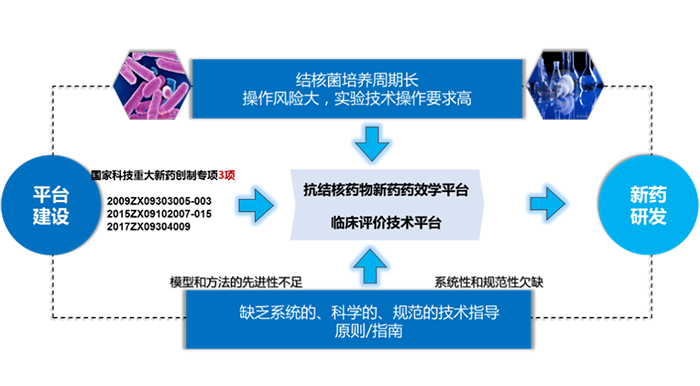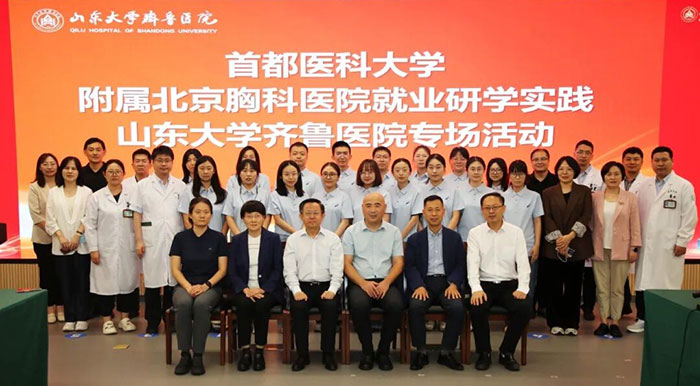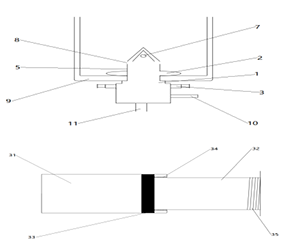2025年
No.5
PubMed
(tuberculosis[Title/Abstract]) OR (lung cancer[Title/Abstract])
Filters applied: from 2025/5/1 - 2025/5/31.
1. Nat Rev Immunol. 2025 May;25(5):370-384. doi: 10.1038/s41577-024-01124-3. Epub 2025 Jan 7.
How macrophage heterogeneity affects tuberculosis disease and therapy.
Macrophages are the primary host cell type for infection by Mycobacterium tuberculosis in vivo. Macrophages are also key immune effector cells that mediate the control of bacterial growth. However, the specific macrophage phenotypes that are required for optimal immune control of M. tuberculosis infection in vivo remain poorly defined. There are two distinct macrophage lineages in the lung, comprising embryonically derived, tissue-resident alveolar macrophages and recruited, blood monocyte-derived interstitial macrophages. Recent studies have shown that these lineages respond divergently to similar immune environments within the tuberculosis granuloma. Here, we discuss how the differing responses of macrophage lineages might affect the control or progression of tuberculosis disease. We suggest that the ability to reprogramme macrophage responses appropriately, through immunological or chemotherapeutic routes, could help to optimizevaccines and drug regimens for tuberculosis.
PMID: 39774813
2. Lancet Respir Med. 2025 May;13(5):460-472. doi: 10.1016/S2213-2600(24)00429-6. Epub 2025 Mar 22.
Post-tuberculosis lung disease: towards prevention, diagnosis, and care.
There is a growing body of data describing the high burden of respiratory sequelae seen among tuberculosis survivors, including children, adolescents, and adults. This group of sequelae are known as post-tuberculosis lung disease and include parenchymal damage, airway disease, and pulmonary vascular disease. It is thought that approximately half of pulmonary tuberculosis survivors have ongoing structural pathology, lung function impairment, or respiratory symptoms after the resolution of active disease. Post-tuberculosis lung disease has been associated with adverse patient outcomes, including persistent symptoms and functional impairment, ongoing health seeking, and impacts on income and employment. There is still much to understand about the epidemiology and nature of post-tuberculosis lung disease, but in this Review we focus on strategies for prevention, diagnosis, and care to inform the ongoing work of tuberculosis-affected communities, health-care providers, researchers, and policy makers. We summarise recent data, highlight evidence gaps, and suggest key research priorities for those working in the field.
PMID: 40127662
3. Cancer Res. 2025 May 14. doi: 10.1158/0008-5472.CAN-24-3525. Online ahead of print.
Tobacco Smoking Rewires Cell Metabolism by Inducing GAPDH Succinylation to Promote Lung Cancer Progression.
Patient behavior and physiology can directly affect cancer metabolism. Smoking is the leading risk factor for non-small cell lung cancer (NSCLC). Here, we identified that smoking modulates lung cancer cell metabolism through altered protein post-translational modification. Proteomic analyses identified elevated K251 succinylation (K251-Su) of GAPDH, a key enzyme in glycolysis, in NSCLC samples, and GAPDH K251-Su was significantly higher in patients who smoke compared to non-smokers. Exposure of lung cancer cells to cigarette smoke extract led to increased uptake of glutamine and enhanced GAPDH K251-Su. Glutamine uptake by cancer cells in hypoxic and nutrient-deficient microenvironments provided succinyl-CoA donors for GAPDH succinylation at K251, which was catalyzed by acyltransferase p300. K251-Su increased GAPDH stability by suppressing TRIM4-mediated K254 ubiquitination. GAPDH K251-Su enhanced glycolysis and glutamine reductive carboxylation to meet the demands for cell growth and to support survival in hypoxic and nutrient-depleted conditions, promoting tumor growth and metastasis. These findings indicate that tobacco smoking mediates metabolic reprogramming of cancer cells through succinylation of GAPDH to drive NSCLC progression.
PMID: 40366632
4. Cell Death Differ. 2025 May 29. doi: 10.1038/s41418-025-01531-6. Online ahead of print.
Targeting the BCKDK/BCLAF1/MYC/HK2 axis to alter aerobic glycolysis and overcome Trametinib resistance in lung cancer.
The protein branched-chain ketoacid dehydrogenase kinase (BCKDK), which regulates the metabolism of branched-chain amino acids, has recently been implicated in tumor progression. However, the role of BCKDK in lung cancer remains largely unexplored. In this study, we explored the mechanisms by which BCKDK influences lung cancer progression and contributes to drug resistance. By integrating single-cell RNA and bulk RNA sequencing data from lung cancer patients, we identified BCKDK as a novel gene related to malignant epithelial cells, involved in tumor initiation and associated with poor patient prognosis. Subsequently, through a series of molecular biology experiments, we demonstrated that BCKDK promotes aerobic glycolysis, Trametinib resistance, and tumor progression in lung cancer by upregulating MYC transcription. Mechanistically, BCKDK interacts with BCLAF1 to promote its phosphorylation at the serine 285 site. This modification facilitates BCLAF1 binding to the MYC promoter, thereby enhancing MYC transcription. Subsequently, elevated MYC levels upregulate hexokinase 2, promoting aerobic glycolysis and lung cancer progression. In addition, the elevated glycolysis product, lactate, promotes Trametinib resistance by upregulating the ABC transporters. Taken together, our data identify BCKDK as a novel regulator of aerobic glycolysis that promotes lung cancer progression and Trametinib resistance through the BCKDK/BCLAF1/MYC/HK2 axis. Targeting BCKDK in combination with Trametinib may offer a promising treatment for lung cancer. Graphical representation of the BCKDK/BCLAF1/MYC/HK2 axis and its role in Trametinib resistance and lung cancer progression. Created with BioRender.com.
PMID: 40442441
5. Signal Transduct Target Ther. 2025 May 27;10(1):175. doi: 10.103/s41392-025-02256-1.
China Protocol for early screening, precise diagnosis, and individualized treatment of lung cancer.
Early screening, diagnosis, and treatment of lung cancer are pivotal in clinical practice since the tumor stage remains the most dominant factor that affects patient survival. Previous initiatives have tried to develop new tools for decision-making of lung cancer. In this study, we proposed the China Protocol, a complete workflow of lung cancer tailored to the Chinese population, which is implemented by steps including early screening by evaluation of risk factors and three-dimensional thin-layer image reconstruction technique for low-dose computed tomography (Tre-LDCT), accurate diagnosis via artificial intelligence (AI) and novel biomarkers, and individualized treatment through non-invasive molecule visualization strategies. The application of this protocol has improved the early diagnosis and 5-year survival rates of lung cancer in China. The proportion of early-stage (stage I) lung cancer has increased from 46.3% to 65.6%, along with a 5-year survival rate of 90.4%. Moreover, especially for stage IA1 lung cancer, the diagnosis rate has improved from 16% to 27.9%; meanwhile, the 5-year survival rate of this group achieved 97.5%. Thus, here we defined stage IA1 lung cancer, which cohort benefits significantly from early diagnosis and treatment, as the "ultra-early stage lung cancer", aiming to provide an intuitive description for more precise management and survival improvement. In the future, we will promote our findings to multicenterremote areas through medical alliances and mobile health services with the desire to move forward the diagnosis and treatment of lung cancer.
PMID: 40425545
6. Immunity. 2025 Jun 10;58(6):1586-1597.e5. doi: 10.1016/j.immuni. 2025. 05.004. Epub 2025 May 30.
Antibody-Fab and -Fc features promote Mycobacterium tuberculosis restriction.
Update of
bioRxiv. 2024 Oct 11:2024.10.07.617070. doi: 10.1101/2024. 10. 07. 617070.
Mycobacterium tuberculosis, the causative agent of tuberculosis (TB), a leading cause of death by an infectious disease globally, has no efficacious vaccine. Antibodies are implicated in M. tuberculosis control, but the mechanisms of action remain poorly understood. We assembled a library of monoclonal antibodies (mAb) and screened for M. tuberculosis-restrictive activity in mice, identifying protective antibodies targeting diverse antigens. To dissect the mechanism of mAb-mediated M. tuberculosis restriction, we optimized a protective lipoarabinomannan-specific mAb, generating Fc variants. In vivo analysis of these Fc variants revealed a role for Fc-effector function in M. tuberculosis restriction. Restrictive Fc variants altered distribution of M. tuberculosis across innate immune cells. Single-cell transcriptomics highlighted distinctly activated pathways within innate immune cell subpopulations, identifying early activation of neutrophils as a key signature of mAb-mediated M. tuberculosis restriction. Therefore, antibody-mediated restriction of M. tuberculosis is associated with reorganization of the tissue-level immune response to infection and depends on the collaboration of antibody Fab and Fc.
PMID: 40449485 [Indexed for MEDLINE]
7. CA Cancer J Clin. 2025 May-Jun;75(3):216-225. doi: 10.3322/caac.70005. Epub 2025 Mar 25.
Averted lung cancer deaths due to reductions in cigarette smoking in the United States, 1970-2022.
Lung cancer mortality rates in the United States have declined steeply in recent decades, largely because of substantial reductions in smoking prevalence, as approximately 85% of lung cancer deaths are attributable to cigarette smoking. In this study, the authors estimate the number of averted lung cancer deaths and corresponding person-years of life gained during 1970-2022 as a measure of progress in cancer prevention through tobacco control. By using the 1970-2022 National Center for Health Statistics mortality data (with national coverage), the authors calculated the expected number of deaths for each year, age, sex, race, and age group based on the expected lung cancer death rate multiplied by the population at risk in that group. The number of averted lung cancer deaths were calculated by subtracting the observed number of deaths from the expected number in each group. Person-years of life gained were estimated as a measure of avoided premature mortality based on the average additional years a person would have lived if they had not died from lung cancer. The authors estimated that 3,856,240 lung cancer deaths (2,246,610 in men, 1,609,630 in women) were averted, and 76,275,550 person-years of life (40,277,690 in men, 35,997,860 in women) were gained during 1970-2022, with an average of 19.8 person-years of life gained (17.9 in men, 22.4 in women) per averted death. The number of averted lung cancer deaths accounted for 51.4% of the estimated declines in overall cancer deaths and was substantially greater in men (60.1%) than in women (42.7%). By race, this proportion was 53.6% in the White population (62.8% in men, 44.6% in women) and 40.0% in the Black population (44.4% in men, 34.7% in women). The substantial estimated numbers of averted lung cancer deaths and person-years of life gained highlight the remarkable effect of progress against smoking on reducing premature mortality from lung cancer.
PMID: 40131130 [Indexed for MEDLINE]
8. Nat Rev Cancer. 2025 May;25(5):379-392. doi: 10.1038/s41568-025-00791-1. Epub 2025 Feb 24.
Translating premalignant biology to accelerate non-small-cell lung cancer interception.
Over the past decade, substantial progress has been made in the development of targeted and immune-based therapies for patients with advanced non-small-cell lung cancer. To further improve outcomes for patients with lung cancer, identifying and intercepting disease at the earliest and most curable stages are crucial next steps. With the recent implementation of low-dose computed tomography scan screening in populations at high risk, there is an emerging unmet need for new diagnostic, prognostic and therapeutic tools to help treat patients suspected of harbouring premalignant lesions and minimally invasive non-small-cell lung cancer. Continued advances in the identification of the earliest drivers of lung carcinogenesis are poised to address these unmet needs.
Employing multimodal approaches to chart the temporal and spatial maps of the molecular events driving lung premalignant lesion progression will refine our understanding of early carcinogenesis. Elucidating the molecular drivers of premalignancy is critical to the development of biomarkers to detect those incubating a premalignant lesion, to stratify risk for progression to invasive cancer and to identify novel therapeutic targets to intercept that process. In this Review, we summarize emerging insights into the earliest cellular and molecular events associated with lung squamous and adenocarcinoma carcinogenesis and highlight the growing opportunity for translating these insights into clinical tools for early detection and disease interception to transform the outcomes for those at risk for lung cancer.
PMID: 39994467
9. J Thorac Oncol. 2025 May 14: S1556-0864(25)00717-8. doi: 10.1016/j.jtho. 2025.05.009. Online ahead of print.
Risk-Based Lung Cancer Screening in Clinical Practice.
INTRODUCTION: Current U.S. lung cancer screening guidelines use only age and smoking history; however, individual risk calculators may better stratify risk.
METHODS: In a referred cohort design, we implemented a multisite lung cancer screening program across four states. We screened patients who qualified by either the USPSTF2013 criteria or a PLCOm2012 risk of greater than or equal to 1.34%. Invasive procedures were abstracted retrospectively. We compared the incidence and prevalence of lung cancer among patients who qualified by only USPSTF2013 or PLCOm2012 and along the continuum of prospective lung cancer risk using PLCOm2012.
RESULTS: Of 2471 screened patients, 114 had lung cancer. Furthermore, 84% of all patients and 91% of patients who were diagnosed with having cancer qualified by both criteria. Prevalence of lung cancers were over 7 times higher in the 10% of the cohort with the highest prospective risk than the lowest risk 10%. Incidence of cancers were higher among patients who qualified only by PLCOm2012 (3.6 per 1000 person-years) compared with patients who qualified only by USPSTF2013 (0 per 1000 person-years). Of screen-detected NSCLC, 74% was stage I or II. Three (4.5%) surgical resections were performed for screen-identified nodules which proved to be benign. Overall, 106 patients (4.3%) underwent an invasive intervention due to screening.
CONCLUSIONS: Most patients qualified for lung cancer screening by both UPSTSF2013 and PLCOm2012 criteria. Incidence cancers were higheramong patients who qualified by PLCOm2012 but not USPSTF2013 criteria. Prevalence and incidence cancer identification increased with prospective risk. Invasive procedures and resections for benign disease were relatively low.
PMID: 40379047
10. J Thorac Oncol. 2025 May 24: S1556-0864(25)00722-1. doi: 10.1016/ j.jtho.2025.05.014. Online ahead of print.
Safety and Sample Adequacy for Comprehensive Biomarker Testing of Bronchoscopic Biopsies: An American Association of Bronchology and Interventional Pulmonology (AABIP) and International Association for the Study of Lung Cancer (IASLC) Clinical Practice Guideline.
Linear endobronchial (EBUS) guided sampling of accessible mediastinal lesions is well established as a first-choice modality for lung cancer mediastinal staging. Parenchymal lung lesions, however, are routinely accessed by either a percutaneous (CT-guided) or a bronchoscopic approach. Direct comparisons between the percutaneous approach and bronchoscopy, or EBUS and mediastinoscopy are sparse in regard to diagnostic accuracy and it remains unknown which sampling technique is the safest and offers the most adequate material for comprehensive biomarker testing. This guideline addresses new evidence and aims to answer these questions relevant to contemporary lung cancer clinical practice. A multidisciplinary expert panel from the AABIP and the Early Detection and Screening Committee of the IASLC was convened to address four PICO questions pertaining to the safety and adequacy of comprehensive biomarker testing for commonly used intra-thoracic biopsy techniques. The panel included 24 experts in thoracic procedures, including 18 pulmonologists, 2 radiologists, 1 pathologist and 3 thoracic surgeons from 22 hospitals across 12 countries. All panel members participated in the development of the final recommendations using a modified Delphi technique. Specific recommendations are provided on safety and adequacy of minimally invasive thoracic interventions on patients with confirmed or suspected lung cancer for which comprehensive biomarker testing is needed for standard of care or clinical trials participation.
PMID: 40419141
11. Lancet Infect Dis. 2025 May 20: S1473-3099(25)00214-2. doi: 10.1016/ S1473-3099(25)00214-2. Online ahead of print.
The health impact of identifying a person with tuberculosis through systematic screening.
Screening populations at high risk for tuberculosis might improve clinical outcomes and reduce transmission, but the value and cost-effectiveness of population-based screening depend on the uncertain health impact of early tuberculosis detection. In this Personal View, we propose a framework for estimating the incremental health impact of systematic screening, including effects on tuberculosis morbidity, mortality, sequelae, and transmission. Our framework accounts for the timing of screening, relative to when routine diagnosis might occur and when health effects become inevitable. We also account for the heterogeneous duration of tuberculosis, as people with longer disease courses (associated with lower mortality but more transmission) are more likely to be detected by screening. Finally, we use this framework to estimate that population-based chest x-ray screening interventions might avert 2·4 disability-adjusted life-years per person (95% uncertainty interval 0·8-7·4) found to have tuberculosis through screening-well within the cost effectiveness thresholds for many programmes with published costs.
PMID: 40409325
12. Cancer Discov. 2025 May 2;15(5):884-889. doi: 10.1158/2159-8290.CD-25-0262.
A Roadmap to Precision Immunotherapy for Early-Stage Non-Small Cell Lung Cancer.
Immunotherapy has revolutionized the treatment of early-stage non-small cell lung cancer; yet many patients fail to achieve long-lasting benefit, partially because of incomplete or inconsistent biomarker predictions. Integrative multiomics, combining tumor-intrinsic, immune microenvironment, andsystemic factors, offer a more comprehensive framework for precision immunotherapy, enabling improved patient stratification, treatment selection and outcomes.
PMID: 39997992 [Indexed for MEDLINE]
13. J Thorac Oncol. 2025 May;20(5):589-596. doi: 10.1016/ j. jtho. 2024. 12. 003. Epub 2024 Dec 4.
The Use of Investigator-Assigned Subjective or Judgmental Efficacy and Toxicity Reporting in Early Phase Clinical Trials of Lung Cancer Treatments.
INTRODUCTION: Investigator-assigned Subjective or Judgmental Efficacy and Toxicity (ISJET) reporting represents language used to contextualize efficacy or toxicity data in clinical trials that may be inappropriate or misleading. In addition, pooling of grade 1 and 2 adverse events (AEs) may reflect a practice based on acute chemotherapy treatments rather than the expansion of chronic treatments that are now commonplace for many patients with lung cancer. In this study, we set out to evaluate the use of ISJETs and combined grade 1 and 2 reporting in early phase clinical trials of lung treatments at the 2024 American Society of Clinical Oncology (ASCO) Annual Meeting.
METHODS: Phase I and II clinical trials of systemic treatments in adults with at least one patient with lung cancer presented at the 2024 ASCO Annual Meeting were reviewed. Baseline information and toxicity/efficacy reporting were collected. ISJETs were captured based on predefined phrases such as "tolerable," "manageable," "acceptable," or "favorable."
RESULTS: A total of 100 eligible studies were identified. The median sample size was 43 (interquartile range 29-73), and 61 studies (61%) were phase I trials. Most studies reported any-grade (99%) and grade 3 (96%) AEs. Only 12% of the studies distinguished between grade 1 and 2 AEs. ISJETs were used to report toxicity in 88% and efficacy in 41% of the studies, respectively.
CONCLUSION: Most early phase lung cancer clinical trials presented at the 2024 ASCO Annual Meeting included ISJETs and did not distinguish between grade 1 and 2 AEs. Initiatives to increase objective efficacy and toxicity reporting language and more fit-for-purpose toxicity reporting are warranted.
PMID: 39643116
14. Nat Biomed Eng. 2025 May;9(5):686-699. doi: 10.1038/s41551-024-01340-1. Epub 2025 Jan 29.
Urinary bioorthogonal reporters for the monitoring of the efficacy of chemotherapy for lung cancer and of associated kidney injury.
The utility of urinary tests for the monitoring of the treatment efficacy and adverse events of anticancer therapies is constrained by the low concentration of relevant urinary biomarkers. Here we report, using mice with lung cancer and treated with chemotherapy, of a urinary fluorescence test for the concurrent monitoring of the levels of a tumour biomarker (cathepsin B) and of a biomarker of chemotherapy-induced kidney injury (N-acetyl-β-D-glucosaminidase). The test involves two intratracheally administered urinary reporters leveraging caged bioorthogonal click handles for the biomarker-dependent activation of 'clickability' and renal clearance, and the bioorthogonal click reaction of each renally cleared reporter with paired fluorescence indicators in the collected urine. In mouse models of chemotherapy-treated orthotopic lung cancer and of cisplatin-induced kidney injury, lower urinary fluorescence signals (which can be measured by a smartphone camera) for tumour and kidney injury levels positively correlated with animal weight gain and survival time. Biomarker-activated bioorthogonal click reactivity and renal clearance combined with bioorthogonally triggered fluorescence in vitro may enable specific, sensitive and rapid urinary assays for the monitoring of other physiopathological processes.
PMID: 39880894 [Indexed for MEDLINE]
15. Drug Resist Updat. 2025 May;80: 101213. doi: 10.1016/ j.drup. 2025. 101213. Epub 2025 Feb 15.
Sanfetrinem, an oral β-lactam antibiotic repurposed for the treatment of tuberculosis.
Update of
bioRxiv. 2024 Oct 10:2024.10.10.617558. doi: 10.1101/ 2024.10. 10. 617558.
Tuberculosis (TB) is historically the world's deadliest infectious disease. New TB drugs that can avoid pre-existing resistance are desperately needed. The β-lactams are the oldest and most widely used class of antibiotics to treat bacterial infections but, for a variety of reasons, they were largely ignored until recently as a potential treatment option for TB. Recently, a growing body of evidence indicates that later-generation carbapenems in the presence of β-lactamase inhibitors could play a role in TB treatment. However, most of these drugs can only be administered intravenously in the clinic. We performed a screening of β-lactams against intracellular Mycobacterium tuberculosis (Mtb) and identified sanfetrinem cilexetil as a promising oral β-lactam candidate. Preclinical in vitro and in vivo studies demonstrated that: (i) media composition impacts the activity of sanfetrinem against Mtb, being more potent in the presence of physiologically relevant cholesterol as the only carbon source, compared to the standard broth media; (ii) sanfetrinem shows broad spectrum activity against Mtb clinical isolates, including MDR/XDR strains; (iii) sanfetrinem is rapidly bactericidal in vitro against Mtb despite being poorly stable in the assay media; (iv) there are strong in vitro synergistic interactions with amoxicillin, ethambutol, rifampicin and rifapentine and, (v) sanfetrinem cilexetil is active in an in vivo model of infection. These data, together with robust pre-clinical and clinical studies of broad-spectrum carbapenem antibiotics carried out in the 1990s by GSK, identified sanfetrinem as having potential for treating TB and catalyzed a repurposing proof-of-concept Phase 2a clinical study (NCT05388448) in South Africa.
PMID: 40020440
16. Eur Urol. 2025 May;87(5):561-570. doi: 10.1016/j.eururo.2024.08.029. Epub 2024 Sep 12.
Abdominal Noncontrast Computed Tomography Scanning to Screen for Kidney Cancer and Other Abdominal Pathology Within Community-based Computed Tomography Screening for Lung Cancer: Results of the Yorkshire Kidney Screening Trial.
BACKGROUND AND OBJECTIVE: The Yorkshire Kidney Screening Trial (YKST) assessed the feasibility of adding abdominal noncontrast computed tomography (NCCT) to lung cancer screening to screen for kidney cancer and other abdominal pathology.
METHODS: A prospective diagnostic study offered abdominal NCCT to 55-80-yr-old ever-smokers attending a UK randomised lung cancer screening trial (May 2021 to October 2022). The exclusion criteria were dementia, frailty, previous kidney/lung cancer, and computed tomography (CT) of the abdomen and thorax within previous 6 and 12 mo, respectively. Six-month follow-up was undertaken.
KEY FINDINGS AND LIMITATIONS: A total of 4438 people attended lung screening, of whom 4309 (97%) were eligible for and 4019 (93%) accepted abdominal NCCT. Only 3.9% respondents regretted participating. The additional time to conduct the YKST processes was 13.3 min. Of the participants, 2586 (64%) had a normal abdominal NCCT, whilst 787 (20%) required an abdominal NCCT imaging review but no further action and 611 (15%) required further evaluation (investigations and/or clinic). Of the participants, 211 (5.3%) had a new serious finding, including 25 (0.62%) with a renal mass/complex cyst, of whom ten (0.25%) had histologically proven kidney cancer; ten (0.25%) with other cancers; and 60 (1.5%) with abdominal aortic aneurysms (AAAs). Twenty-five (0.62%) participants had treatment with curative intent. Of the participants, 1017 (25%) had nonserious findings, most commonly benign renal cysts (727 [18%]), whereas only 259 (6.4%) had nonserious findings requiring further tests. The number needed to screen to detect one serious abdominal finding was 18; it was 93 to detect one suspicious renal lesion and 402 to detect one histologically confirmed renal cancer. Limitations of the cohort were fixed age range and being prior lung
cancer screening attendees.
CONCLUSIONS AND CLINICAL IMPLICATIONS: In this first prospective risk-stratified screening study of abdominal NCCT offered alongside CT thorax, uptake and participant satisfaction were high. The prevalence of serious findings, cancers, and AAAs, is in the range of established screening programmes such as bowel cancer. Longer-term outcomes and cost effectiveness should now be evaluated.
PMID: 39271419
17. J Thorac Oncol. 2025 May;20(5):614-624. doi: 10.1016/j.jtho. 2024. 12. 010. Epub 2024 Dec 16.
Actionable NSCLC Mutation Identification by Comprehensive Genomic Profiling for Clinical Trial Enrollment: The European Program for the Routine Testing of Patients With Advanced Lung Cancer (EPROPA).
INTRODUCTION: The advocacy Women Against Lung Cancer in Europe (WALCE) promoted the European Program for the Routine Testing of Patients With Advanced Lung Cancer (EPROPA) and provided a free-of-charge molecular profiling platform for NSCLC sample characterization with the aim of increasing the detection of targetable drivers and improving patients' access to clinical trials in Europe.
METHODS: From January 2021 to December 2023, 20 centers located at five different European countries (Greece, Slovenia, Romania, Albania, and Italy) joined EPROPA, with 555 patients with advanced NSCLC registered to the program. Anonymized patients' clinical-pathological data were shared through the EPROPA web platform and tissue samples were collected at the Molecular Pathology Unit of the Reference Center (University of Turin) for molecular analyses. A comprehensive genomic profiling by a targeted next-generation sequencing approach has been performed and molecular reports have been discussed within the molecular tumor board to assess patients' eligibility for clinical trials.
RESULTS: The average turnaround time was eight days, with only 30 out of 555 tissue samples (6%) not suitable for molecular analysis. In the 525 analyzed samples, a total of 570 molecular alterations have been identified, including 264 pathogenic targetable oncogenic alterations and 113 cases with co-occurring mutations. A total of 18 molecular alterations with potential germline and hereditary cancer syndrome implications have been reported. The identification of a clinical trial was considered for 205 patients. After molecular tumor board discussion, 30 patients were enrolled and treated in clinical studies available in Europe. Survival outcomes were significantly improved in patients with targetable molecular alterations receiving a matched targeted therapy.
CONCLUSION: This data confirmed the feasibility and usefulness of the program in the real-world practice scenario, supporting the implementation of next-generation sequencing-based molecular characterization of NSCLC samples, to reduce the unequal access to tests, drugs, and clinical trials in Europe.
PMID: 39694416
18. Cancer Cell. 2025 May 12;43(5):891-904.e10. doi: 10.1016/j. ccell. 2025.03.027. Epub 2025 Apr 17.
Circular RMST cooperates with lineage-driving transcription factors to govern neuroendocrine transdifferentiation.
Circular RNA (circRNA) is a class of noncoding RNA with regulatorypotentials. Its role in the transdifferentiation of prostate and lung adenocarcinoma into neuroendocrine prostate cancer (NEPC) and small cell lung cancer (SCLC) remains unexplored. Here, we identified circRMST as an exceptionally abundant circRNA predominantly expressed in NEPC and SCLC, with strong conservation between humans and mice. Functional studies using shRNA, siRNA, CRISPR-Cas13, and Cas9 consistently demonstrate that circRMST is essential for tumor growth and the expression of ASCL1, a master regulator of neuroendocrine fate. Genetic knockout of Rmst in NEPC genetic engineered mouse models prevents neuroendocrine transdifferentiation, maintaining tumors in an adenocarcinoma state. Mechanistically, circRMST physically interacts with lineage transcription factors NKX2-1 and SOX2. Loss of circRMST induces NKX2-1 protein degradation through autophagy-lysosomal pathway and alters the genomic binding of SOX2, collectively leading to the loss of ASCL1 transcription.
PMID: 40250444









.jpg)
















